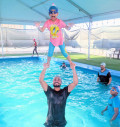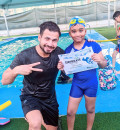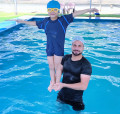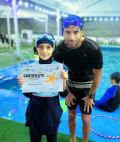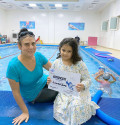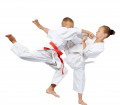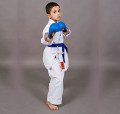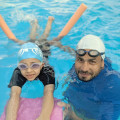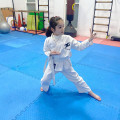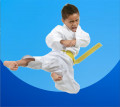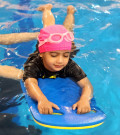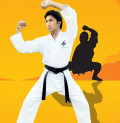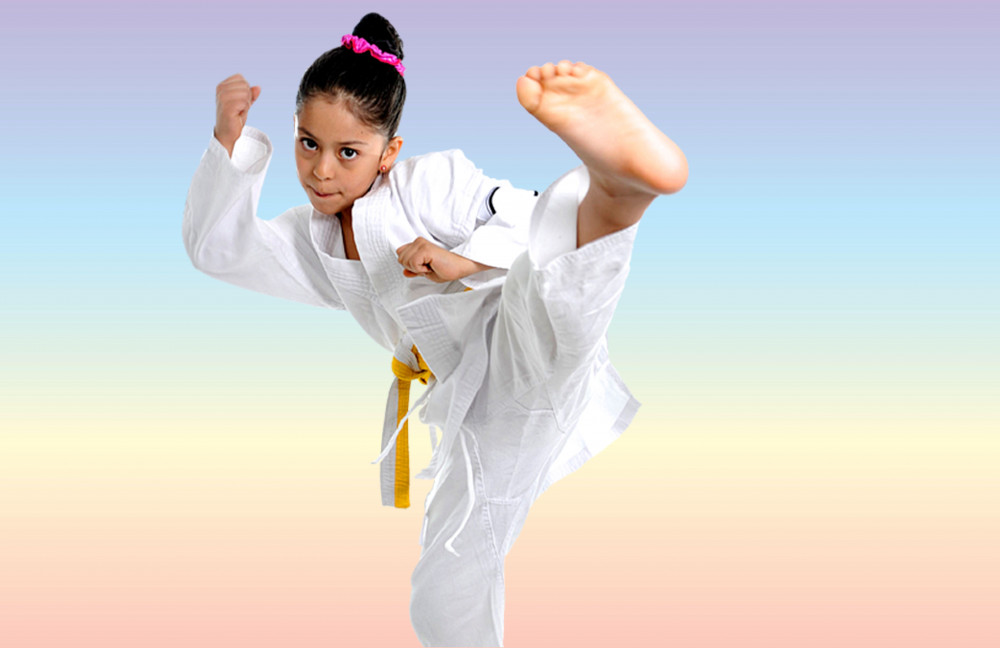
Karate for kids learn the front kick
2023-11-29 - karateIntroduction
Karate, an ancient martial art form, has found a new avenue
in the development of young minds and bodies. In this article, we will delve
into the significance of learning the front kick in karate for kids, exploring
its benefits and providing practical insights for both parents and aspiring
young martial artists.
Benefits of Karate for Kids
Physical Fitness
Karate is not just about punches and kicks; it's a holistic
physical activity. Kids engaging in karate experience improved coordination,
flexibility, and overall physical strength. The front kick, as a fundamental
technique, contributes significantly to enhancing these physical attributes.
Mental Discipline
Beyond the physical aspect, karate instills mental
discipline in children. The structured nature of karate classes teaches kids
the importance of focus, patience, and perseverance—skills that extend beyond
the dojo and into everyday life.
Self-defense Skills
In an increasingly uncertain world, knowing self-defense is
a valuable skill for kids. Karate empowers children with the ability to protect
themselves if the need arises. The front kick, with its versatility, becomes a
key element in their self-defense arsenal.
Basics of Karate
Stance and Posture
Before diving into the intricacies of the front kick,
mastering the basics is crucial. Karate emphasizes a strong and balanced
stance, providing a solid foundation for all techniques. Proper posture ensures
effective execution of movements, including the front kick.
Hand Techniques
While karate involves various hand techniques, the focus
here is on the feet. However, understanding hand movements complements the
overall coordination and balance required for executing the front kick.
Leg Techniques: Focus on Front Kick
The front kick, executed with precision, is a powerful
offensive and defensive move. Understanding the mechanics of the front kick is
essential for young karate enthusiasts.
Front Kick in Karate
Explanation of the Front Kick
The front kick involves lifting the knee and extending the
leg forward to strike the opponent. It targets the midsection and head,
offering a versatile offensive move. Learning the correct form ensures
effectiveness and reduces the risk of injury.
Importance of Mastering the Front Kick
In karate, each technique serves a purpose. The front kick,
with its speed and reach, is a valuable skill in keeping opponents at bay.
Mastering this technique early on sets the stage for a child's progression in
karate.
Step-by-step Guide to Executing a Perfect Front Kick
Proper Stance: Begin with a balanced stance, weight
evenly distributed.
Lift Knee: Bring the knee up towards the chest while
maintaining balance.
Extend Leg: Kick forward with the ball of the foot,
keeping the toes pointed.
Retract Quickly: After the kick, return the leg
swiftly to the starting position.
Training Methods
Solo Drills for Front Kick Improvement
Kicking in Place: Practice the motion without moving
forward.
Target Practice: Use a designated target for accuracy
and precision.
Balancing Exercises: Enhance stability for better
kick control.
Partner Drills for Practical Application
Mirror Drills: Mimic partner's movements for
coordination.
Pad Work: Partners hold pads for practicing target
accuracy.
Sparring: Controlled sparring sessions for applying
front kicks in a dynamic environment.
Incorporating Front Kicks into Routine Exercises
Karate training should be dynamic and engaging. Integrating
front kicks into warm-up routines and cool-down exercises ensures consistent
practice and gradual improvement.
Overcoming Challenges
Common Mistakes in Front Kick Execution
Incorrect Posture: Failure to maintain a proper
stance affects the balance.
Lack of Extension: Inadequate extension reduces the
effectiveness of the kick.
Poor Timing: Executing the kick at the wrong moment
diminishes its impact.
Tips for Refining the Front Kick Technique
Focus on Form: Pay attention to each element of the
kick for precision.
Regular Practice: Consistency is key in refining any
martial arts technique.
Seek Feedback: Instructors' feedback helps in
identifying and correcting mistakes.
Building Confidence through Consistent Practice
As with any skill, confidence grows with practice.
Encouraging kids to embrace challenges and celebrate small victories builds not
only martial prowess but also self-esteem.
Karate Classes for Kids
Choosing the Right Karate School
Parents play a pivotal role in selecting the right karate
school for their children. Consider factors such as the instructor's
experience, class size, and the school's philosophy to ensure a positive
learning environment.
Qualities of an Effective Karate Instructor
An effective karate instructor for kids should possess not
only martial expertise but also patience and a nurturing attitude. The ability
to connect with young learners fosters a positive and encouraging atmosphere.







.jpg)















































